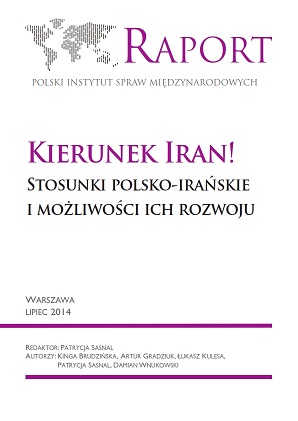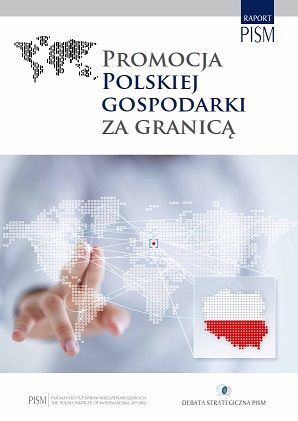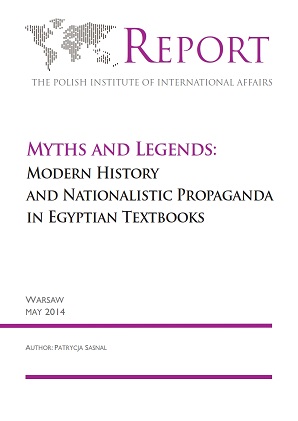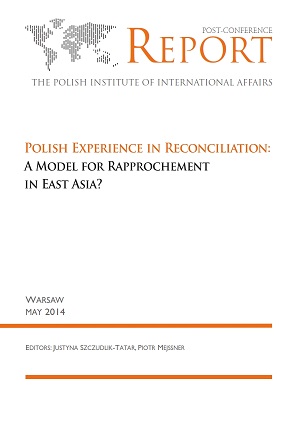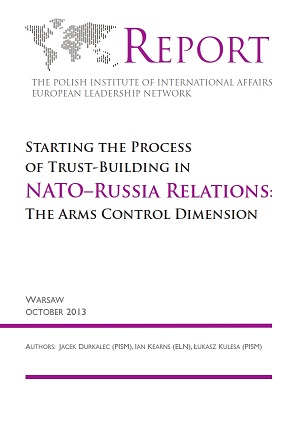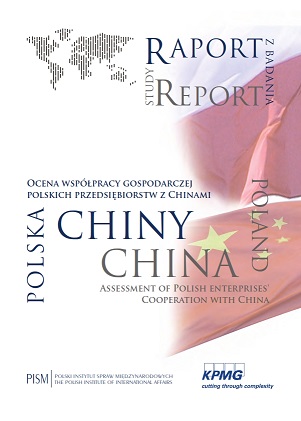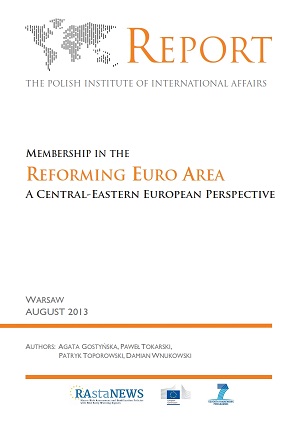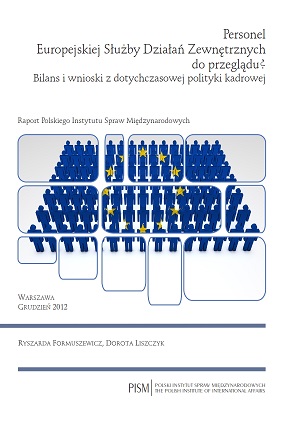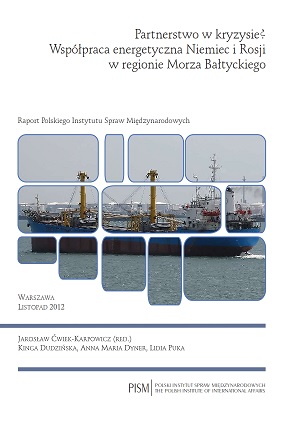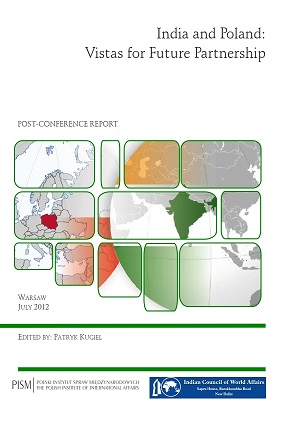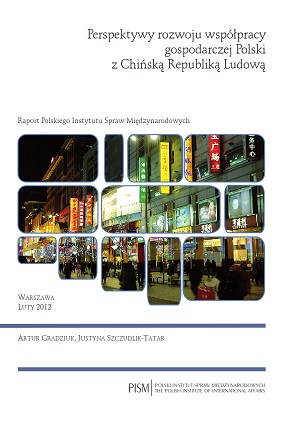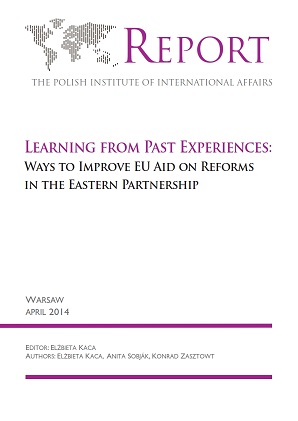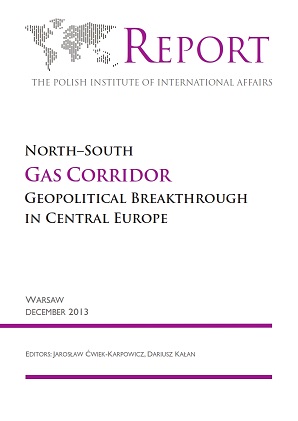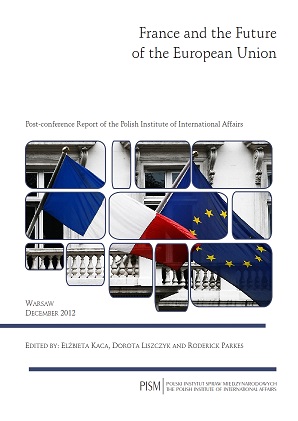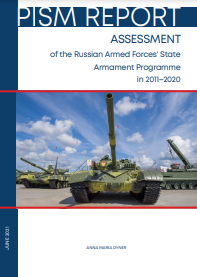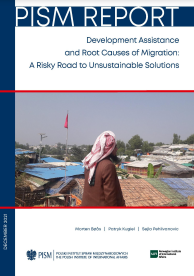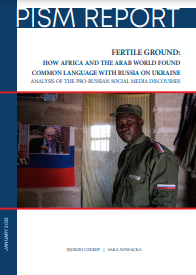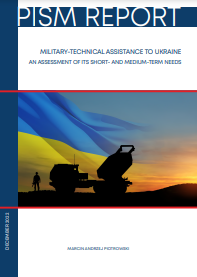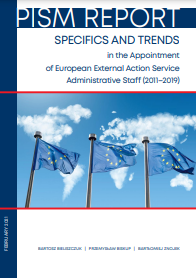Military-Technical Assistance to Ukraine an Assessment of Its Short - And Medium-Term Needs
Author(s): Marcin Piotrowski / Language(s): English
Keywords: Military assistance; technical assistance; Ukraine; war; needs;
Western military aid has played a key role in Ukraine’s ability to preserve its independence, but it is still insufficient to break Russia’s offensive potential, to recapture Russian-held territory, or even to stop Russia’s next possible offensives - in short, to end the war. Ukraine cannot rely on its own defence industry, a great part of which has been destroyed. For these reasons, it is necessary to increase both the scale and scope of Western military support for Ukraine, which should include more NATO-standard weapons than before. Although the situation on the battlefield became more favourable for Ukraine in autumn 2022, Russia still has an advantage in terms of quantity and reserves of armament. Without breaking the Russian offensive potential, which would bring a conclusion to the war on terms favourable to Ukraine, there is no chance for changing Russia’s strategic ambitions and calculus. Russia will attempt to regain the military initiative, as confirmed by its “partial mobilisation” and placing industry on a war footing. To date, the course of the war has confirmed that the results at the strategic and tactical levels depend on the appropriate concentration and use of heavy conventional weapons. The six essential types of these capabilities are: heavy barrel and rocket artillery, armoured and motorised troops, longer-range missiles, air power, drones (UAVs) and loitering munitions, and air-defence systems. So far, Ukraine has serious gaps in each category, and this asymmetry persists despite Russia’s high losses. Most barriers to providing military assistance to Ukraine are, above all, political in nature. Ukraine’s partners differ in their strategic calculations, scope, scale, and determination to provide assistance. Objectively, obstacles to aid stem from limited reserves of armaments and ammunition and decades-long policies of reducing the production capacity of Western defence industries. In general, the first step for providing military aid to Ukraine is clarifying capability gaps, that is, the disparity with Russia. The next step is to analyse available options for supplying weapons and ammunition. One can consider eastern options (Soviet-made or compatible systems), STANAG options (NATO-standard weapons), and asymmetric options (systems that are not equal to a given capability but make it possible to counter it, for example, anti-tank guided missiles as a partial solution to the issue of Russian numerical superiority in tanks, at the same time substituting for the lack of Western tanks). A third step, especially for Ukraine’s neighbouring partners, could be to use the support of NATO forces and means, or accelerated individual modernisation efforts, to fill the gaps created by the transfer of their weapons to Ukraine. In most of the capability gaps analysed, there are severe limitations to further pursue the eastern options, due to the rapidly depleting reserves of Soviet systems or ammunition in NATO countries. At the same time, asymmetric options must be considered as interim or complementary solutions in the absence of a willingness by some of Ukraine’s partners to supply weapons analogous to Russia’s. Therefore, the most desirable and effective capabilities that can be offered to Ukraine are systems identified in this report as STANAG options, which are produced in NATO countries or by pro-Western Asian states. Within a few months of the war, Ukraine’s heavy artillery almost fully transitioned from Soviet-era systems to howitzers, HIMARS, MLRS launchers, and STANAG ammunition. Moreover, Ukraine already relies almost entirely on Western drones and loitering munitions and on access to commercial drones. A similar transition will also be necessary in Ukraine’s armoured and motorised forces, longer-range guided missiles, air force, and air defence systems. Ukraine’s current artillery capabilities are based on several post-Soviet systems and at least 9-10 different NATO howitzer models. Weakness of such a “patchwork” of systems calls for a gradual rationalisation of assistance to Ukraine, for example the creation of simple and continuous logistics chains, the formation of units using the same standardised systems, and maintaining assistance from smaller groups of states that have supplied identical systems. Such rationalisation would be advisable in 2023-2024 for the majority of other STANAG options, which would also increase the interoperability of Ukrainian forces with NATO in the post-war perspective. Due to probable exhaustion of T-72 tank reserves in Europe in 2023, Ukraine may need to switch to NATO tank models, such as the American M-60 and M-1 Abrams or the German Leopard-1 and Leopard-2. Existing NATO and non-NATO reserves of M-113 armoured personnel carriers also make it possible to fully outfit Ukraine’s land forces with them. Even with positive decisions on tank deliveries, Ukraine will still need a continuous supply of anti-tank missiles, especially of the Javelin or TOW type. Russia has an overwhelming advantage over Ukraine in ballistic and cruise missiles. Currently, Ukraine does not have the capability to strike Russian targets at more than 100-120 km, apart from the selective and improvised use of long-range drones. In 2023-2024, it is necessary to continue supplying Ukraine with HARM anti-radar and Harpoon anti-ship missiles. Urgent and binding arrangements between the U.S. and Ukraine are also needed for the possible delivery of ATACMS ballistic missiles with a range of 300 km. Ukraine faces the full degradation of its air force, which is based on MiG-29 and Su-27 multi-role aircraft, as early as in 2023. This requires its transition to a new fleet of aircraft, such as American F-16s or Swedish Gripens. Postponing this decision beyond 2024 will create a dangerous capability gap on the Ukrainian side. There are fewer problems with supplying Ukraine with post-Soviet transport and attack helicopters from Central Europe, so the full transition of this fleet to Western systems can be carried out at a later date. Ukraine’s air defence is responsible for inflicting relatively high losses on Russia’s air force, but in this area eastern options are running out, too. Therefore, in 2023 it will be necessary to build a new network of radars and air interceptor launchers for Ukraine, based on NASAMS, HAWK, and IRIS-T systems. Also during 2023 there is a need to finish studies on the new architecture of Ukraine’s longer-range, integrated air and missile defence, preferably based on Patriot or SAMP-T systems. NATO’s attention should focus on the capability gaps emerging in some Central European members due to their delivery of weapons to Ukraine. The cost and scale of their accelerated armed forces’ modernisation to fill national gaps are now so high that they require support from Western Europeans and the U.S. NATO’s forces and systems on the Eastern Flank must support credible deterrence and defence posture, which to now relies mainly on U.S. efforts. Only synchronised military aid to Ukraine and reinforcement of NATO’s Eastern Flank countries will ensure the complete failure of Russia’s plans in Europe.
More...
